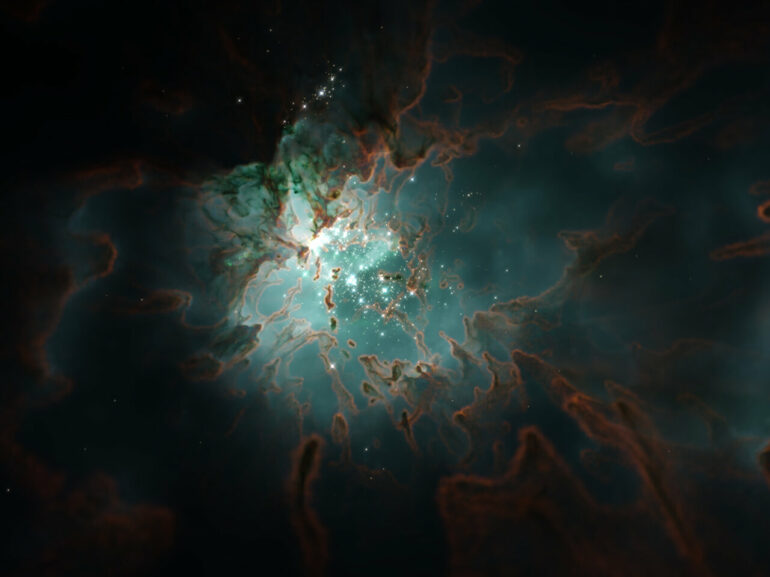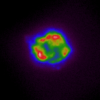Last year, a team of astrophysicists including key members from Northwestern University launched STARFORGE, a project that produces the most realistic, highest-resolution 3D simulations of star formation to date. Now, the scientists have used the highly detailed simulations to uncover what determines the masses of stars, a mystery that has captivated astrophysicists for decades.
In a new study, the team discovered that star formation is a self-regulatory process. In other words, stars themselves set their own masses. This helps explain why stars formed in disparate environments still have similar masses. The new finding may enable researchers to better understand star formation within our own Milky Way and other galaxies.
The study was published last week in the Monthly Notices of the Royal Astronomical Society. The collaborative team included experts from Northwestern, University of Texas at Austin (UT Austin), Carnegie Observatories, Harvard University and the California Institute of Technology. The lead author of the new study is Dávid Guszejnov, a postdoctoral fellow at UT Austin.
“Understanding the stellar initial mass function is such an important problem because it impacts astrophysics across the board—from nearby planets to distant galaxies,” said Northwestern’s Claude-André Faucher-Giguère, a study co-author. “This is because stars have relatively simple DNA. If you know the mass of a star, then you know most things about the star: how much light it emits, how long it will live and what will happen to it when it dies. The distribution of stellar masses is thus critical for whether planets that orbit stars can potentially sustain life, as well as what distant galaxies look like.”
More information:
Dávid Guszejnov et al, Effects of the environment and feedback physics on the initial mass function of stars in the STARFORGE simulations, Monthly Notices of the Royal Astronomical Society (2022). DOI: 10.1093/mnras/stac2060
Provided by
Northwestern University
Citation:
Exploring how stars determine their own masses (2022, August 8)



